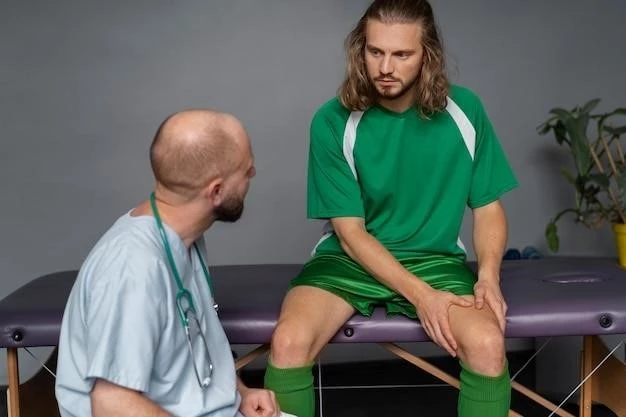Introduction
Congenital muscular dystrophy is a group of early-onset muscle weakness disorders․ Learn about merosin-negative CMD, a rare genetic disease affecting infants and children․
Overview of Congenital Muscular Dystrophy
Congenital muscular dystrophy (CMD) is a group of hereditary muscle disorders that typically manifest early in life, causing progressive muscle weakness and dystrophic changes․ Different forms of CMD exist, with varying clinical presentations and genetic origins․ Merosin-negative CMD, specifically, is a rare subtype associated with severe muscle weakness apparent from birth or within the first months of life․ Understanding the specific characteristics and genetic factors of CMD is crucial for accurate diagnosis and management․
Merosin-Negative Congenital Muscular Dystrophy is a rare genetic disease affecting children, characterized by severe muscle weakness noticeable from birth or infancy․ It is crucial to understand the distinct features and implications of this condition for proper management․
Definition and Characteristics
Merosin-Negative Congenital Muscular Dystrophy is a rare genetic disorder characterized by muscle weakness evident from birth or infancy․ This condition is autosomal recessive and linked to abnormalities in the LAMA2 gene, affecting muscle function and development․ Understanding the definition and distinctive characteristics of merosin-negative CMD is essential for accurate diagnosis and effective treatment strategies․
Clinical Presentation and Symptoms
Merosin-Negative Congenital Muscular Dystrophy typically presents with severe muscle weakness noticeable at birth or within the first months of life․ Infants may exhibit hypotonia, delayed motor development, poor suck, and cry․ Some individuals with this condition may also have periventricular white matter abnormalities in the brain․ Recognizing these clinical features is crucial for early diagnosis and appropriate management of merosin-negative CMD․

Causes and Genetic Basis
Understanding the genetic basis of merosin-negative congenital muscular dystrophy is crucial․ This rare disease is caused by mutations in the LAMA2 gene, impacting muscle function․ It is inherited in an autosomal recessive manner, highlighting the importance of genetic counseling and testing for families affected by this condition․
Autosomal Recessive Inheritance
Merosin-Negative Congenital Muscular Dystrophy follows an autosomal recessive pattern of inheritance․ This means that both parents must pass on a copy of the mutated gene for their child to develop the condition․ Understanding the inheritance pattern is essential for genetic counseling and family planning in individuals with merosin-negative CMD․
Mutations in the LAMA2 Gene
Merosin-Negative Congenital Muscular Dystrophy is caused by mutations in the LAMA2 gene, which encodes laminin-alpha 2, a crucial protein for muscle health․ Understanding the genetic basis of this condition is essential for diagnosis, genetic counseling, and potential treatment strategies․
Diagnosis and Clinical Evaluation
Diagnosing merosin-negative congenital muscular dystrophy involves evaluating clinical symptoms, genetic testing for LAMA2 mutations, and imaging studies to assess muscle and brain abnormalities․ Early diagnosis is key for implementing appropriate treatment and support strategies․
Diagnostic Criteria
The diagnosis of merosin-negative congenital muscular dystrophy involves assessing clinical symptoms such as severe muscle weakness apparent at birth, conducting genetic testing for mutations in the LAMA2 gene, and utilizing imaging studies to detect brain abnormalities․ Early and accurate diagnosis based on these criteria is essential for effective management and care planning for individuals with merosin-negative CMD․
Imaging Studies and Laboratory Tests
Imaging studies such as brain MRIs and muscle biopsies are essential for diagnosing merosin-negative congenital muscular dystrophy․ These tests help identify brain abnormalities and muscle pathology characteristic of the condition․ Additionally, laboratory tests, including genetic testing for mutations in the LAMA2 gene, play a crucial role in confirming the diagnosis and guiding appropriate treatment strategies․ Collaboration between medical professionals and genetic specialists is vital for accurate diagnostic evaluation in individuals suspected of having merosin-negative CMD․
Treatment Approaches
Managing merosin-negative congenital muscular dystrophy involves a multidisciplinary approach to address symptoms and improve quality of life․ Collaborating with specialists in physiotherapy, orthotics, respiratory care, orthopedics, and genetics is essential for comprehensive care and support․ Stay informed about available treatments and seek guidance from experts to ensure optimal management of this condition․
Management of Symptoms
Managing the symptoms of merosin-negative congenital muscular dystrophy involves a comprehensive approach tailored to the individual needs of patients․ Different aspects such as physical therapy, orthotic interventions, respiratory support, and genetic counseling play key roles in addressing specific symptoms and enhancing the quality of life for individuals affected by this condition․ Collaboration with healthcare professionals specializing in neuromuscular disorders can help optimize treatment plans and provide holistic care for patients with merosin-negative CMD․
Multidisciplinary Care Team
Managing merosin-negative congenital muscular dystrophy requires a coordinated effort from a multidisciplinary team comprising healthcare professionals such as neurologists, geneticists, physiotherapists, occupational therapists, and social workers․ Collaborating with experts in various fields ensures comprehensive care and support tailored to the individual needs of patients with merosin-negative CMD․ Establishing a strong care team can help optimize treatment outcomes and improve the overall quality of life for individuals living with this condition․

Prognosis and Complications
Understanding the long-term outlook and potential complications associated with merosin-negative congenital muscular dystrophy is essential for managing the condition effectively․ It is crucial to be aware of the implications of this rare genetic disease to provide the best possible care and support for individuals affected by merosin-negative CMD․
Long-Term Outlook
Understanding the long-term outlook for individuals with merosin-negative congenital muscular dystrophy is crucial for providing appropriate care and support․ Patients may face challenges related to muscle weakness, motor function, and potential complications throughout their lives․ By staying informed about the expected progression of the disease and regularly engaging with healthcare providers, individuals with merosin-negative CMD can proactively manage their condition and optimize their quality of life․
Potential Complications
Individuals with merosin-negative congenital muscular dystrophy may face potential complications such as respiratory difficulties, joint contractures, feeding problems, and developmental delays․ Additionally, some patients may experience challenges related to mobility and independence․ Monitoring for these complications and implementing appropriate interventions can help improve the overall quality of life for individuals with merosin-negative CMD․
